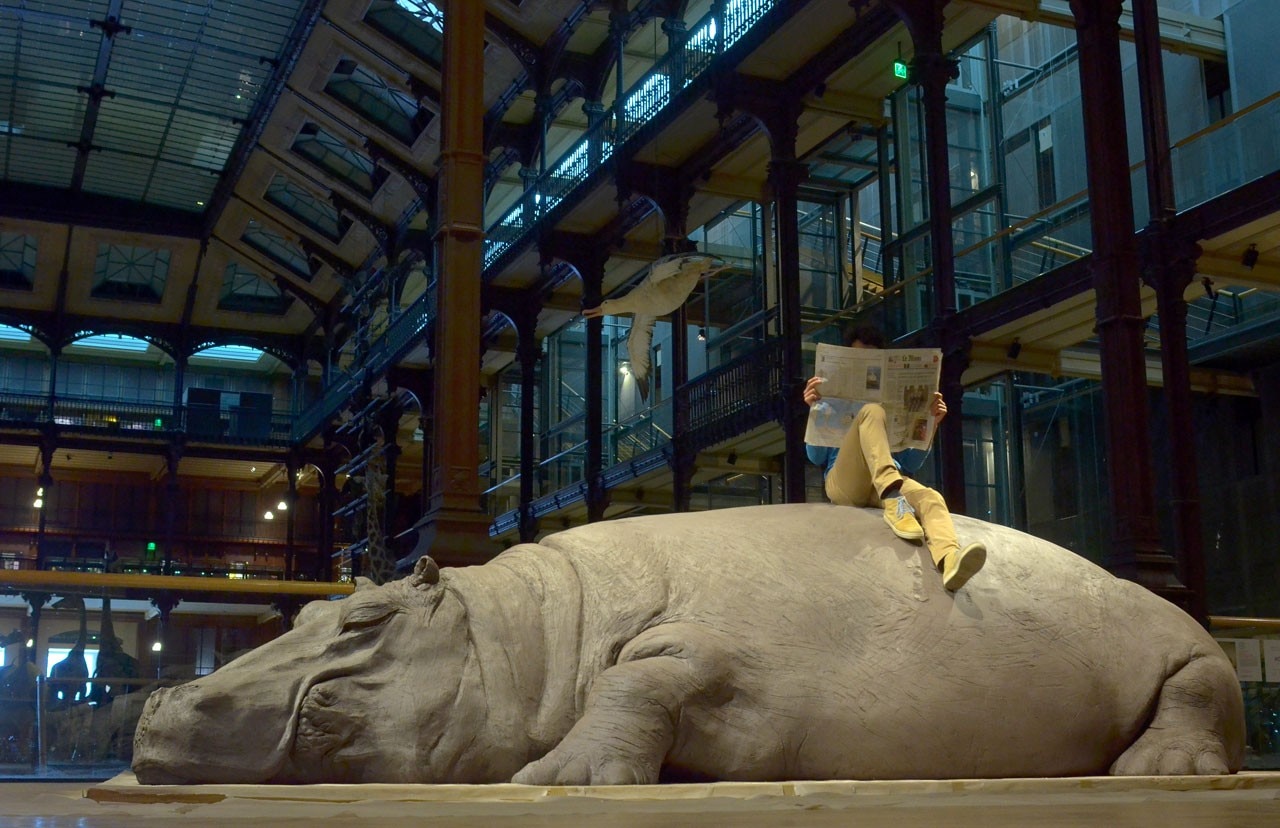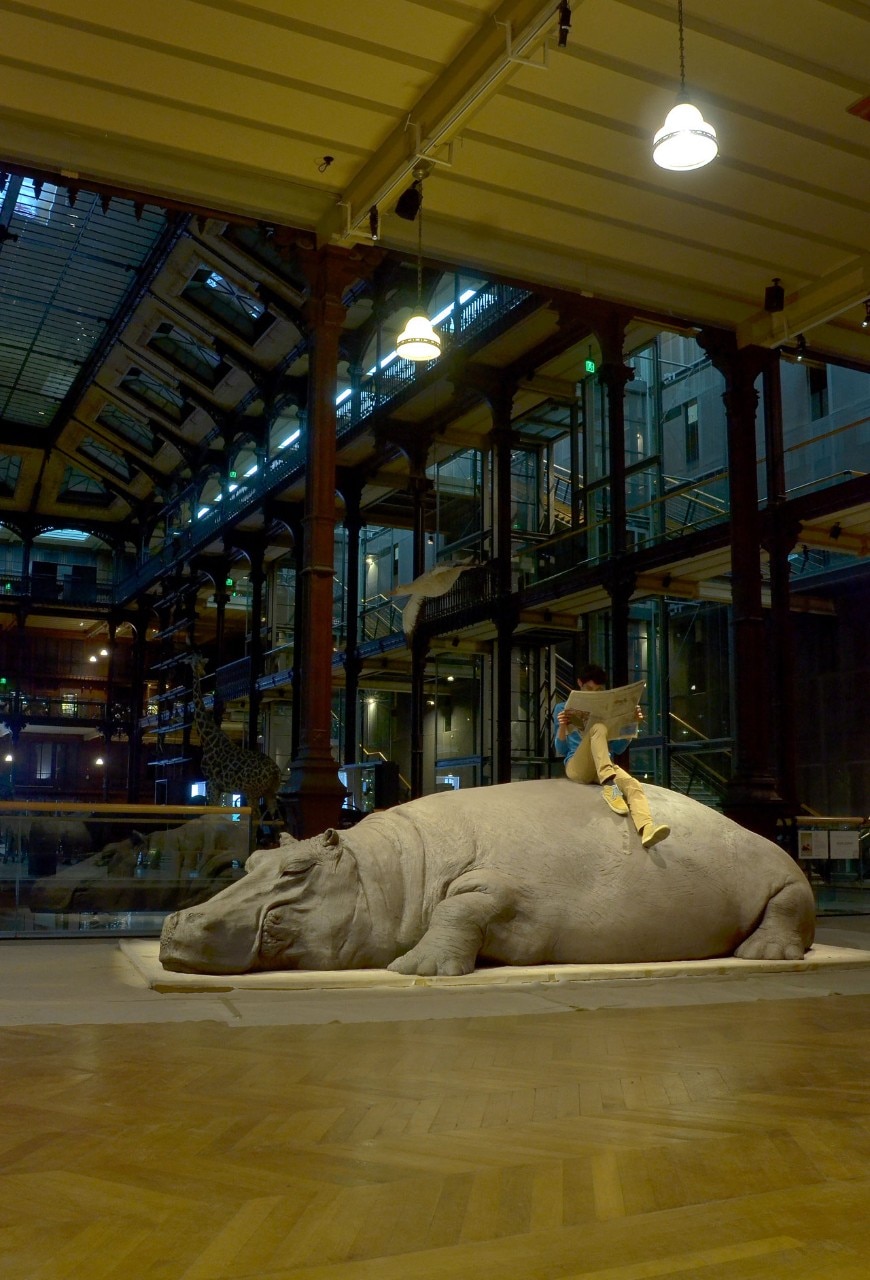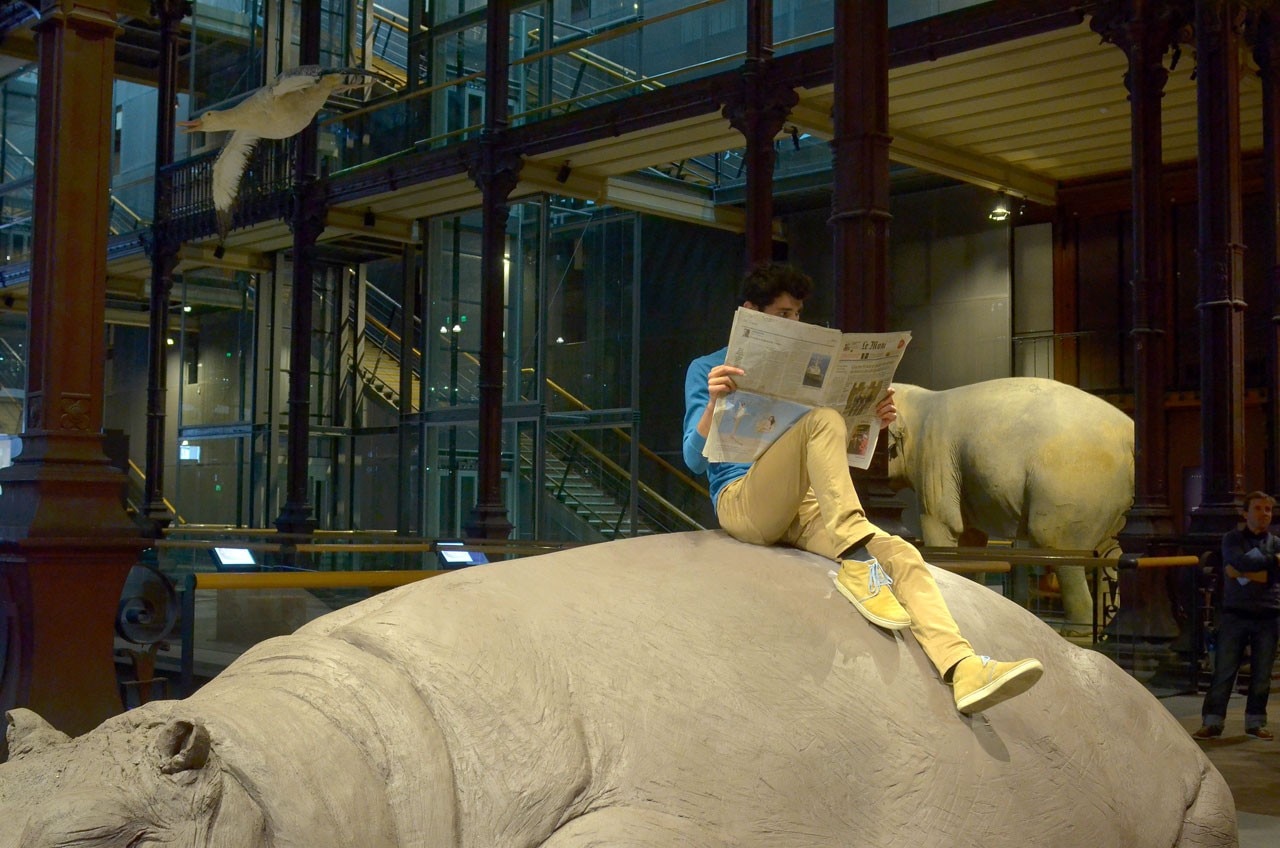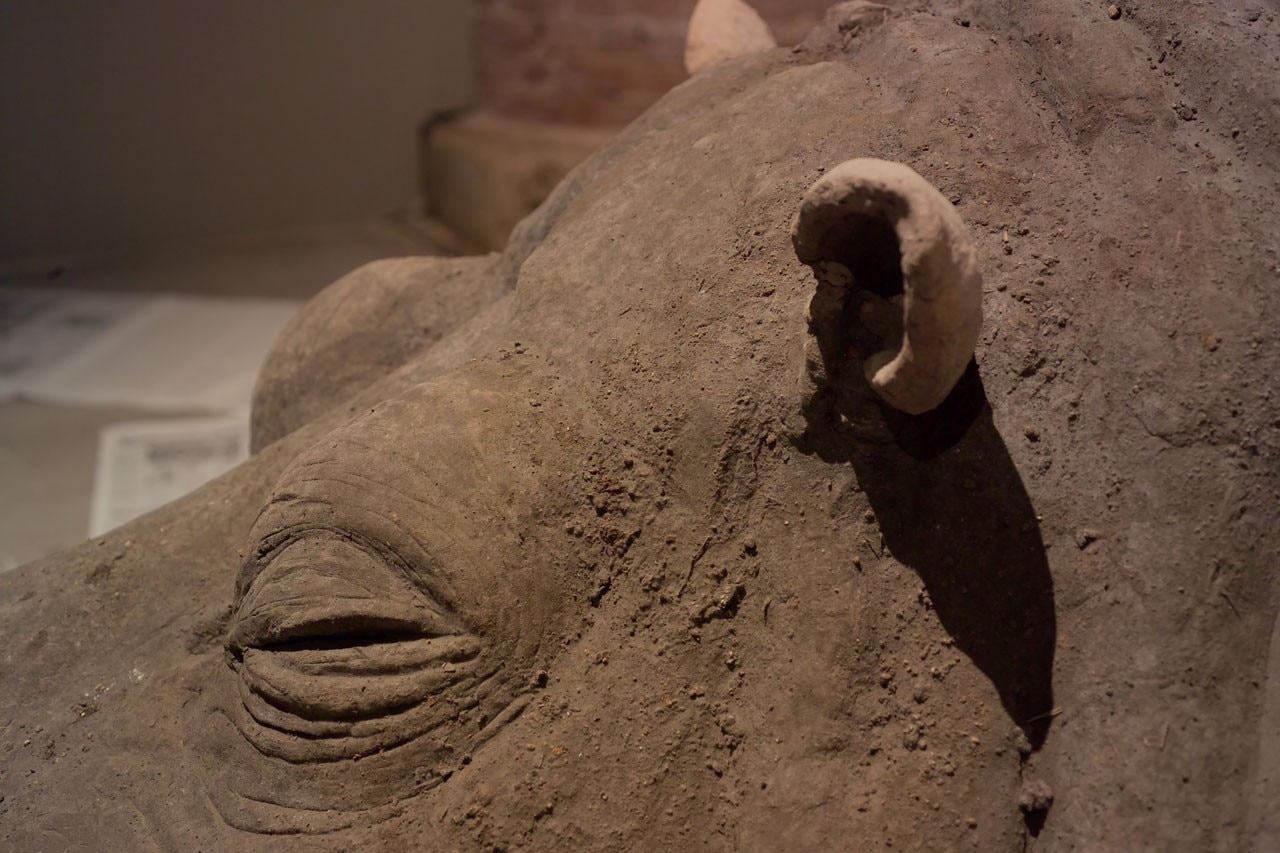
When addressing the Paris Autumn Festival programme, we could start from the viral effect of a poster reproducing a photograph of an old work, Hope Hippo, from the artistic duo’s first participation in the Venice Biennale in 2005. It consists in a young man sitting on a mud hippopotamus and reading a newspaper. Much was written about the whistle blown every time a phrase concerning social injustice came up in the text: a thermometer, an alarm or a warning? No, it was a specific signal to alert humankind.
Created back then with mud from the Venetian lagoon, that particular work is long gone but has now reappeared in a splendid location: Hope Hippo now makes a fine show of itself strategically positioned in the Grand Galerie de l’Evolution in the Museum of Natural History in Paris, looking like a custodian at the top of a special observatory and able to continue its sophisticated mission. The fact that the reading of the newspaper along Heidegger lines forms part of man’s religious aimlessness in the modern world probably only adds credit to the use of metaphors that permeates the work of Allora & Calzadilla.

So, they make us aware that this is not simply a re-edition of an old work but the start of a new fairytale, with new works produced for the occasion that were prompted by the time they spent here. The artists suggest that not only are we in a silent Wunderkammer of post-Enlightened thought but this place is filled with sensitive substances and exhibits waiting to be reactivated. A custodian told them the incredible and bizarre story of two elephants called Hans and Parkie whose skeletons are stored in the Zooteque. This served as input for Apotome, a film and score lasting 23 minutes and 5 seconds executed by Tim Storms, the man who can emit the lowest frequencies in the world.
This grotesque jewel could only be activated thanks to his incredible vocal skill. A concert was improvised exclusively for the two animals in May 1798, the first known music performance for animal species alone. A perfect example of metalinguistic connection between species and an effective experiment of communication based on evolution. The American singer now reinterprets the pieces – ranging from Gluck’s Ipyhigenia in Tauris to the revolution song Ça ira. The music really is inaudible and exactly as per the film’s title, a difficult Pythagorean measure of musical sound.



